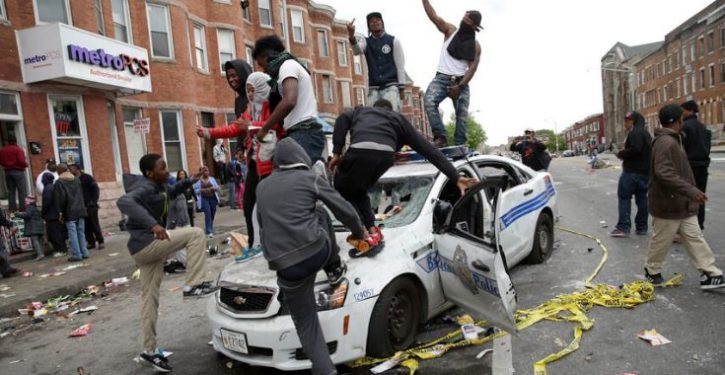
Killings have risen rapidly in Baltimore among teens, who are killing and being killed at a much higher rate. The Baltimore Sun calls such killings by the young “a new type of violence”:
Those 19 and under in Baltimore are being killed and shot in 2023 at a pace not seen in at least a decade, according to a new Baltimore Sun analysis of police data. There have been so many victims that it’s the equivalent of one being shot about every two days and one being killed every week…
The shootings happen all over the city: At the Inner Harbor, at parties, at bus stops, at restaurants. Shots ring out near schools and at home.
The victims are almost always students or recent graduates. Sometimes they have jobs. Sometimes they’re athletes or artists. All of them are someone’s kid.
At least 28 “young people” (aged 19 or younger) were killed in Baltimore and at least 91 more were shot in the first half of 2023. The number of minors arrested for homicide in the first half of this year is more than triple the number arrested in the first half of 2019. This rising problem is not unique to Baltimore: As Hot Air notes, ” the gangs in many cities have been recruiting new members at younger and younger ages…The gangs see great value in recruiting boys in their early teens and putting them out on the streets to ‘work’ [dealing drugs or stealing]. They know that if they wind up getting caught, the liberal policies in nearly all of the large, blue cities will see them back out on the streets in no time. And the older gang leaders can shake them down for the profits they produce without risking arrest themselves.”
In recent years, Baltimore state’s attorneys have often failed to charge violent minors as adults, even when that means that they will not do serious time. That emboldens teens to commit violent crimes knowing that the consequences will be limited, even in the minority of cases where the offender is caught. Most murders in Baltimore go unsolved.
Carjackings — especially carjackings by teens — have spiked in many cities over the past three years. NewsNation described a “nationwide rise in carjackings”, such as a pastor killed in Memphis by a 15-year-old. Washington, D.C., reported 426 carjackings in 2021, up from 142 in 2019. Two teenage girls aged 13 and 15 carjacked and killed an Uber Eats Driver in Washington, DC, a crime for which they received only juvenile detention, not prison. In 2022, WGN reported that 15 juveniles had been arrested in Chicago for carjacking in just the first half of July. Teenagers are stealing cars and then posting videos boasting about it on Tik Tok. To troubled teenagers, carjacking is cool. In D.C, a 14-year-old was arrested for carjacking six vehicles and trying to take a seventh.
Murders have risen in Baltimore in recent years because prosecutors didn’t seek long sentences for people who committed serious crimes, even when they were adults. As a result, criminals are soon back on the street, where many of them go on to murder innocent people. Most murders in Baltimore are committed by people who previously were convicted of a serious crime, but didn’t serve a lengthy sentence for that crime, notes the City Journal:
Maryland Public Policy Institute researcher Sean Kennedy, who studied 110 homicide cases arising from January 2019 to July 2020, found that suspects in 77 of these had been previously convicted of a serious crime by Mosby’s office. Sixty-one of them (79 percent) faced statutory jail terms that should have kept them in prison beyond the date on which they allegedly committed the homicide.
Longer prison sentences would help stem the violence. Studies indicate that longer periods of incarceration deter many crimes from being committed by people who are not currently incarcerated; they don’t merely prevent people who are already inmates from committing more crimes — although they do that, too. For example, a study found that longer sentences deterred people from committing murder, robbery, and rape. (See Daniel Kessler & Steven J. Levitt, Using Sentence Enhancements to Distinguish Between Deterrence and Incapacitation, National Bureau of Economic Research Working Paper #6484 (1998)).
A 2008 Santa Clara University study found that longer sentences for three-time offenders led to “significantly faster rates of decline in robbery, burglary, larceny, and motor vehicle theft,” even after controlling for pre-existing crime trends and economic, demographic, and policy factors.
Shorter sentences also make inmates more likely to reoffend and commit more crimes. As Michael Rushford noted in the Washington Post, “an exhaustive, decade-long study released in June by the U.S. Sentencing Commission, tracking more than 32,000 federal offenders released from prison in 2010, found that offenders released after serving more than 10 years were 29 percent less likely to be arrested for a new crime than those who served shorter sentences. Offenders who served more than five years were 18 percent less likely to be arrested for new crimes compared to a matched group serving shorter sentences.”



